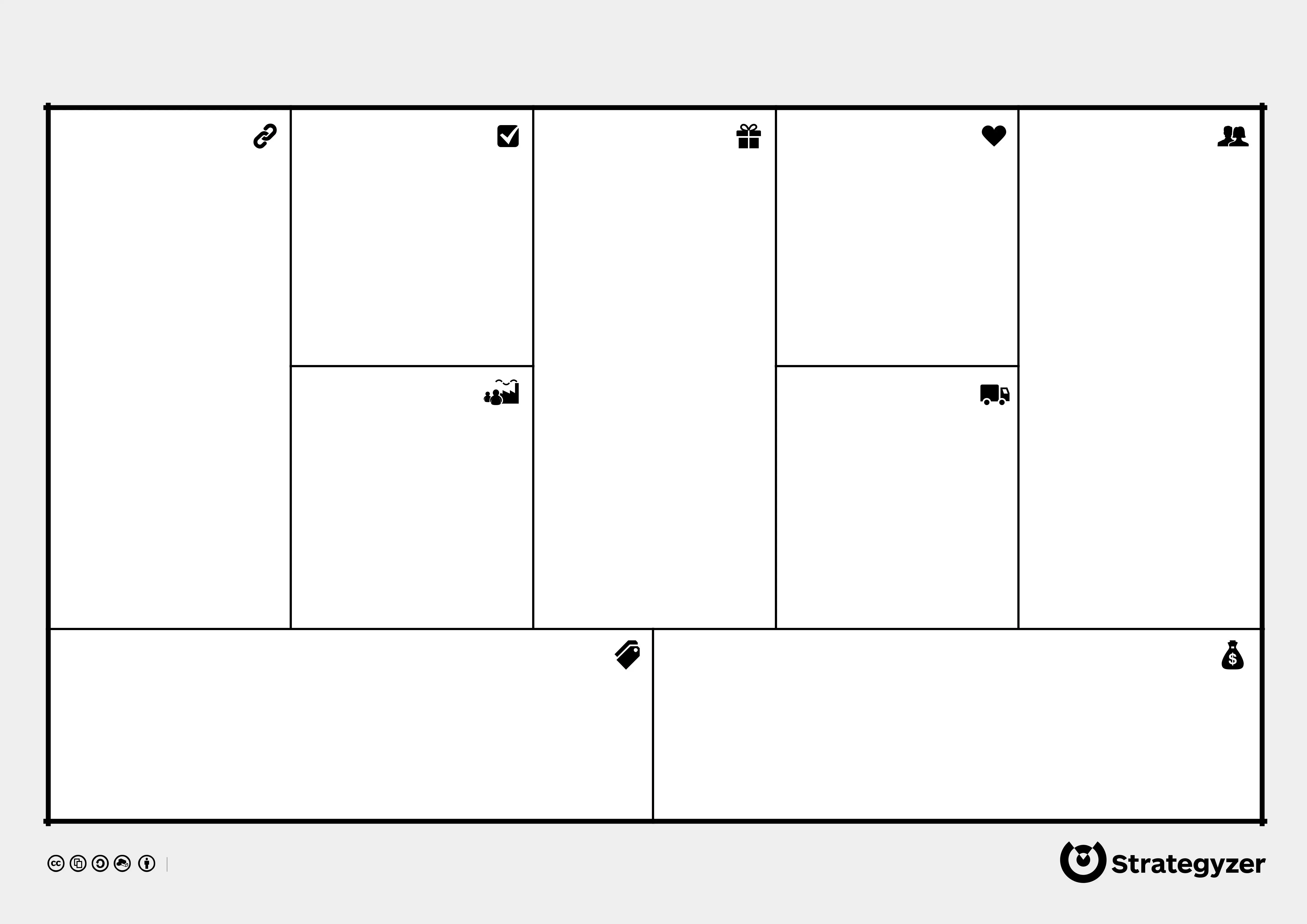Embarking on the journey to structure or restructure a business requires not only vision but also a concrete plan to bring that vision to fruition. The Business Model Canvas Editable form stands as a foundational tool in this process, offering a comprehensive overview that covers every crucial aspect needed to start, evaluate, and innovate a business model. Designed to capture the essence of what makes a business tick, it dives deep into nine core segments: Key Partners, Key Activities, Key Resources, Value Propositions, Customer Relationships, Channels, Customer Segments, Cost Structure, and Revenue Streams. Each segment prompts users to think critically about the different facets of their business, from understanding who the key partners and suppliers are, to defining the unique value propositions that set the business apart in the market. This editable form not only lays out what needs to be considered but also why each element is crucial for success, guiding users through the process of optimization, risk reduction, and tapping into new or existing customer segments. By addressing these areas, businesses can tailor their strategies to meet specific needs and craft a model that not only aligns with their vision but is also capable of adaptation and growth in the ever-evolving marketplace.
| Question | Answer |
|---|---|
| Form Name | Business Model Canvas Editable |
| Form Length | 1 pages |
| Fillable? | No |
| Fillable fields | 0 |
| Avg. time to fill out | 15 sec |
| Other names | canvas editable, business model canvas pdf editable, business model canvas template editable, business canvas editable |

The Business Model Canvas
Designed for: |
|
Designed by: |
|
Date: |
|
Version: |
|
|
|
|
|
|
|
Key Partners
Who are our Key Partners? Who are our key suppliers?
Which Key Resources are we acquairing from partners? Which Key Activities do partners perform?
motivations for partnerships
Optimization and economy
Reduction of risk and uncertainty
Acquisition of particular resources and activities
Key Activities
What Key Activities do our Value Propositions require? Our Distribution Channels?
Customer Relationships? Revenue streams?
catergories
Production
Problem Solving
Platform/Network
Key Resources
What Key Resources do our Value Propositions require? Our Distribution Channels? Customer Relationships? Revenue Streams?
types of resources
Physical
Intellectual (brand patents, copyrights, data)
Human
Financial
Value Propositions
What value do we deliver to the customer? Which one of our customer’s problems are we helping to solve?
What bundles of products and services are we ofering to each Customer Segment?
Which customer needs are we satisfying?
characteristics
Newness
Performance
Customization
“Getting the Job Done”
Design
Brand/Status
Price
Cost Reduction
Risk Reduction
Accessibility
Convenience/Usability
Customer Relationships
What type of relationship does each of our Customer Segments expect us to establish and maintain with them?
Which ones have we established?
How are they integrated with the rest of our business model?
How costly are they?
examples
Personal assistance
Dedicated Personal Assistance
Automated Services
Communities
Channels
Through which Channels do our Customer Segments want to be reached?
How are we reaching them now? How are our Channels integrated? Which ones work best?
Which ones are most
How are we integrating them with customer routines?
channel phases
1.Awareness
How do we raise awareness about our company’s products and services?
2.Evaluation
How do we help customers evaluate our organization’s Value Proposition?
3.Purchase
How do we allow customers to purchase specific products and services?
4.Delivery
How do we deliver a Value Proposition to customers?
5.After sales
How do we provide
Customer Segments
For whom are we creating value?
Who are our most important customers?
Mass Market
Niche Market
Segmented
Diversified
Cost Structure
What are the most important costs inherent in our business model?
Which Key Resources are most expensive?
Which Key Activities are most expensive?
is your business more
Cost Driven (leanest cost structure, low price value proposition, maximum automation, extensive outsourcing) Value Driven (focused on value creation, premium value proposition)
sample characteristics
Fixed Costs (salaries, rents, utilities)
Variable costs
Economies of scale
Economies of scope
Revenue Streams
For what value are our customers really willing to pay? For what do they currently pay?
How are they currently paying? How would they prefer to pay?
How much does each Revenue Stream contribute to overall revenues?
types |
ixeD pricing |
Dynamic pricing |
Asset sale |
List Price |
Negotiation (bargaining) |
Usage fee |
Product feature dependent |
Yield Management |
Subscription Fees |
Customer segment |
|
Lending/Renting/Leasing |
dependent |
|
Licensing |
Volume dependent |
|
Brokerage fees |
|
|
Advertising |
|
|
DesigneD by: Business Model Foundry AG
The makers of Business Model Generation and Strategyzer
This work is licensed under the Creative Commons |
strategyzer.com |
|
|
